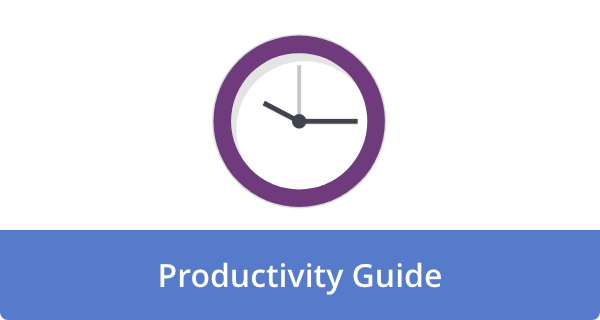

You know the drill. On Monday, you feel invincible. By Thursday, your calendar looks like a game of Tetris played by a sleep-deprived raccoon, and your “priority” list is a guilt parade. The fix is not more color-coding. You need weekly planning frameworks that absorb reality’s chaos without crumbling.
Our research heard from top experts who design for friction, not fantasy:
- Cal Newport, author and computer science professor, argues that plans fail when they ignore context, not when they lack detail.
- Julie Morgenstern, productivity consultant, recommends structuring weeks around energy and constraints so the system fits your life.
- Annie Duke, decision strategist, reminds us to pre-commit to re-decisions midweek because new information will arrive.
Shared takeaway: durable weekly planning is part choreography, part insurance policy. Tradeoff: you will plan less, but update more.
1) Two-part weekly kickoff: Friday reset, Monday launch
Close the week with a 30-minute Friday reset, then run a 10-minute Monday launch. On Friday, clear your inboxes, capture loose tasks, cancel zombie meetings, and pick three outcomes for next week. Monday morning, sanity-check those outcomes against fresh realities and lock your first deep-work block. This protects weekends, reduces Monday thrash, and keeps your plan grounded in the latest information rather than last week’s wishful thinking.
2) The 3×3 outcome map
Define 3 outcomes across 3 arenas: Core work, Support work, and Life. Write each as a finish line, not a task. Example: “Draft client proposal v1 that a colleague can critique” beats “Work on proposal.” Nine crisp outcomes stop the list from ballooning and make tradeoffs explicit. The logic is simple: fewer, finishable results create momentum, and momentum is what survives Wednesday.
3) The 60% calendar rule
Timebox only 60% of your working hours and leave 40% as float. If you have 40 hours, plan 24, leave 16 for emergency work, overruns, and recovery. On paper, it feels conservative. In realit,y it is accurate. Most teams see at least 25–35% of time consumed by interrupts. Planning for slack converts “derailers” into scheduled work rather than plan breakers. If the week stays calm, you pull work forward.
4) Daily halftime at 2:30 p.m.
Set a standing 10-minute check-in at 2:30 p.m. local time every day. Look at the next 36 hours, promote the next most important block, and drop one thing guilt-free. This is not a second planning session; it is a forecast correction when the day has revealed its curveballs. The move matters most on Tuesday and Wednesday when optimism fades and the calendar tightens.
5) Rocks, pebbles, sand as a capacity model
Give your week 3 rock slots, 8 pebble slots, and endless sand. Rocks are 90–120-minute deep-work blocks, pebbles are 25–45-minute tasks, and sand is messages and admin. Place rocks first, pebbles second, and let sand fill cracks. If a rock slips, you must swap, not stack. The physics metaphor holds: when you respect volume, your container stops overflowing by Thursday afternoon.
6) Calendar-first, list-second
Move high-value tasks from the list to the time. If it is not on the calendar, it is not in the plan. Then keep one short list for opportunistic pickups during float. Lists are menus. Calendars are commitments. When you promote a task into a block with a start and end, you pre-decide the tradeoff and future-proof it against meeting creep.
7) Meeting triage with four verbs
At the start of each week, triage invitations and recurring meetings are sent using four options:
Accept: moves a key outcome forward
Defer: later in the week without harm
Decline: no clear owner or decision
Delegate: someone closer to the work
Treat meetings like inventory. If you do not gatekeep at the door, you will be out of stock on attention by Thursday lunch. A two-minute decision now saves hours later.
8) Theme-hours, not theme days
Full theme days are elegant in theory and brittle in practice. Instead, pick two repeatable theme hours per day, like “11 a.m. Partnership” and “3 p.m. Ops.” You get the batching benefits without making your Tuesday hostage to an unexpected customer fire. The rhythm is stable, the placement is flexible, and the work stays grouped enough to avoid context switching.
9) One-page weekly brief
Before you timebox, write a one-page brief that includes a success statement, constraints, and dependencies. Keep it visible all week. Template:
Success this week looks like: [one sentence]
Constraints: [travel, deadlines, energy windows]
Dependencies: [names, docs, approvals]
This brief is the single source of truth for resolving conflicting requests. It also makes midweek choices faster because you documented why you chose this plan in the first place.
10) Wednesday and Thursday buffer blocks
Hold two 60-minute buffer blocks on Wednesday and Thursday, early afternoon. Protect them like client meetings. Use them for overflows, catch-ups, or unexpected approvals. If nothing is on fire, invest the block in preventive work like drafting next week’s briefs or closing loops. These buffers are your “shock absorbers,” keeping momentum when other plans wobble.
11) The rule of two for deadlines
Where possible, set internal deadlines two days before the external ones. If handoff is due Friday, work to Wednesday. If the review is on Tuesday morning, aim for Sunday night. The math creates options. It builds in space for edits, missing inputs, and life. You will not always control the external date, but you can design your internal runway.
12) Score your week and run a five-line retro
On Thursday afternoon, score plan accuracy from 1 to 10 and jot five lines: what shipped, what slipped, why, one experiment for next week, and one habit to keep. Worked example: you planned six deep-work blocks and completed four, so accuracy is 67%. You note that two blocks died to last-minute reviews, so next week you create a Wednesday buffer—tiny retros compound. By month’s end, your plan is tailored to your real job, not a generic template.
Closing thoughts
Strong weeks are not the product of perfect forecasts. They are the result of flexible frameworks that assume interruption, protect focus, and force honest tradeoffs. Pick two of the systems above, run them for two weeks, then add a third if your plan still wobbles by Thursday. Keep the brief visible, keep capacity at 60%, and keep the halftime ritual. The goal is not pretty planning. The goal is to ship work you are proud of every week.
Image Credit: Photo by Bich Tran: Pexels











Deanna Ritchie
Editor-in-Chief at Calendar. Former Editor-in-Chief and writer at Startup Grind. Freelance editor at Entrepreneur.com. Deanna loves to help build startups, and guide them to discover the business value of their online content and social media marketing.